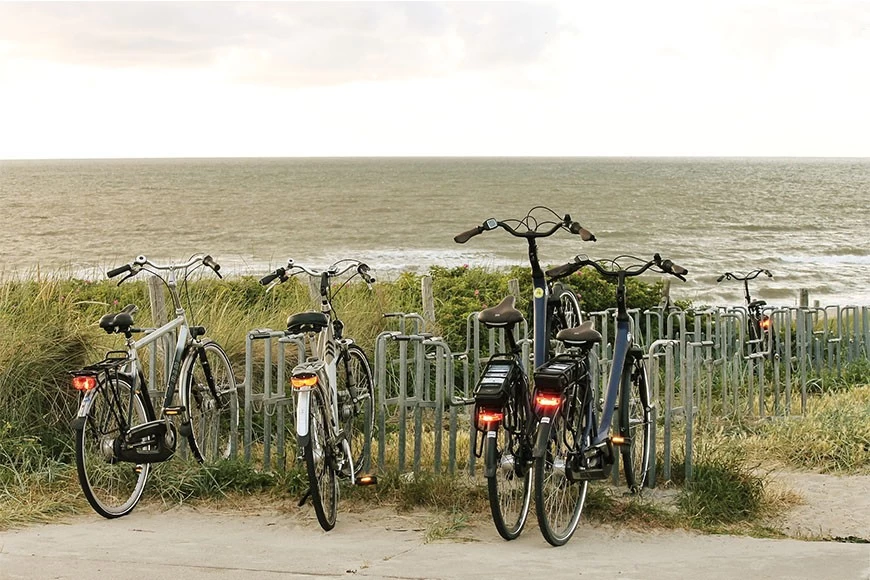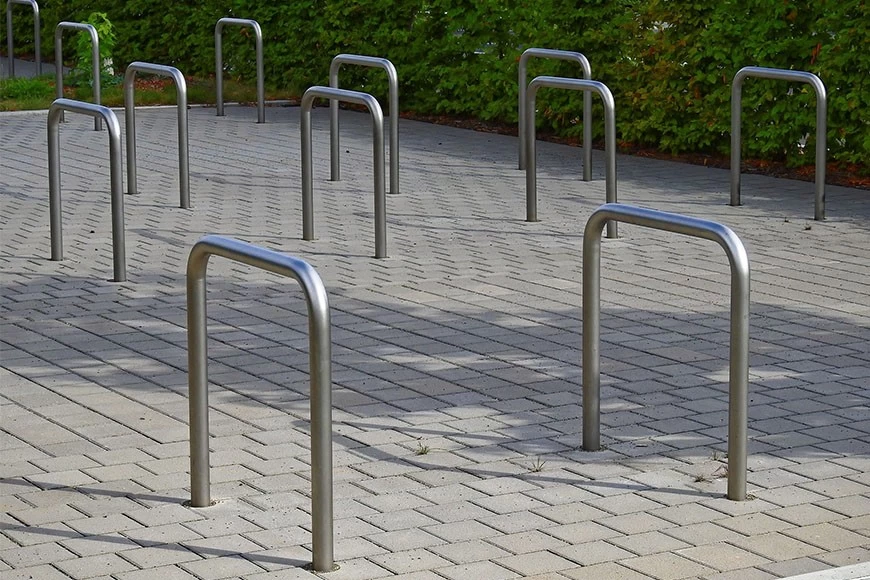Specifications
Model Number : PV-SC-001
Type: Bike parking and storage
Color:Yellow,Black,Green,Red,or Customized.
Style : both indoors and outside
Material : carbon steel
Loading: According to customer need
Size :195*23.2*75cm,200.55*23.2*75cm,or Customized.
Finish: hot-galvanized
Specifications
Model Number : PV-0081-01
Type: Bike parking and storage
Color:silver
Style : both indoors and outside
Material : carbon steel
Loading: According to customer need
Size :Height 1463mm, Depth 1114mm
Finish: hot-galvanized
Model Number : PV-0081-01
Type: Bike parking and storage
Color:Black
Style : both indoors and outside
Material : carbon steel
Loading: 2-10 bikes (According to customer need)
Size :Height 1463mm, Depth 1114mm
Finish: hot-galvanized
Model No.: PV-H1
Size: w605*D400*H330mm
Specification: Round tube:¢16*1.2mm
Finish: Power coated
Net Weight: 1.6 kgs
Packing size:6pcs/ctn
MOQ: 100pcs
Model Number : PV-0024-01
Material : carbon steel/stainless steel
Loading: according customer space size,we can design according the size
Size : W1977*D1130(depend on your parking space)*H2500mm
Finish: Powder coated ,hot-galvanized/electric polish
Packing size :2000*2000*2500mm(40 parking space )
Powder coated ,hot-galvanized/electric polish
Product number:PV-0046-01
Material:carbon steel
Specification:10.2*59*28CM or Customized.
MOQ:100PCS
Port:Shanghai
Trademark:PV
Model Number : PV-0081-01
Type: Outdoor Bike Parking Rack
Style : both indoors and outside
Material : carbon steel
Loading: 2-10 bikes (According to customer need)
Size :170.5*116*148CM
Finish: hot-galvanized
Model Number : PV-0055-01
Type: compact flat pack /slot
Color:black / silver /yellow/optional
Style :Outdoor/indoor
Material : carbon steel/ stainless steel
Capacity : park 6 bikes
Size : L1400*W1054*H840mm
Net weight :38KG
Finish: powder coating / hot galvanized /elctropolishing
Packing size :1490*860*160mm 1pcs/ctn
Product Name: Multi-Capacity Horizontal Two Tier Bike Parking Rack
Material: Carbon Steel
Finish: Powder coated
Post: 80mm * 80mm thickness: 3mm
Steel plate: thickness: 2mm
Dimension: 1325*1890*1830mm
Weight: 370 kg/set
Model: PV-0067-01
Material: stainless steel 304
Pipe: 50 mm* 2.5 mm
Size: 900*700 mm(L*W)
Surface treatment: polishing

As cycling continues to grow in popularity as a sustainable and healthy mode of transportation, the need for proper bicycle parking becomes more crucial. The standard for bicycle parking has evolved over the years, and it is essential to understand the current guidelines to ensure that bicycle parking is secure, accessible, and convenient for cyclists. In this article, we will explore the standard for bicycle parking, including the various guidelines that are commonly followed.
Securely Fastened
One of the most crucial standards for bicycle parking is that the bicycle should be securely fastened to a bicycle rack or other fixed object to prevent theft or damage. The bicycle rack should be sturdy and securely anchored to the ground to prevent it from being pulled up or knocked over. Cyclists should be able to lock their bicycles to the rack using a U-lock or other sturdy lock to prevent theft. Additionally, the bicycle rack should be designed to minimize the risk of damage to the bicycle, such as scratches or dents.
Stable
Another important standard for bicycle parking is that the parking should be stable and not tip over, even when fully loaded. Bicycle racks should be designed to support the weight of several bicycles without tipping over. The spacing between the bicycles should be sufficient to prevent them from touching and possibly causing a domino effect of falling bicycles.
Accessible
Bicycle parking should be located in a visible, easily accessible, and convenient location. The parking should be situated in a well-lit area with good visibility to prevent theft or vandalism. It should be easily accessible to cyclists, located close to the destination, and along a safe and well-lit route. The bicycle parking should be in a location where cyclists can easily find it, such as near the entrance of a building, a transit stop, or a park.
Adequate Spacing
The spacing between bicycles should be enough to allow for easy maneuverability and to prevent damage to adjacent bikes. The recommended spacing for bicycle parking is about 24 inches between each bike, allowing enough space to maneuver the bicycle in and out of the parking space. Additionally, the spacing should be designed to accommodate various types of bicycles, including those with larger tires or unique frame shapes.
Weather Protection
If possible, the bicycle parking should be covered or sheltered to protect bicycles from the weather. Cyclists will appreciate bike parking that is located in a covered area to protect their bicycles from the rain, snow, or sun. The shelter should be designed to protect bicycles from all sides, including the top and sides. The shelter should be well-ventilated to allow for air circulation and prevent moisture buildup.
Lighting
The bicycle parking area should be well-lit for safety and security. Adequate lighting is important to prevent theft, vandalism, and accidents. The lighting should be bright enough to allow cyclists to see their bicycles and to deter criminals. Additionally, the lighting should be designed to reduce light pollution, minimize energy consumption, and reduce the impact on wildlife.
Signage
Clear signage indicating the bicycle parking area and any associated rules should be provided. The signage should be placed in a visible location and should clearly indicate where the bicycle parking is located. Additionally, the signage should provide instructions on how to use the bicycle parking, including where to lock the bike, any restrictions on the use of the parking, and contact information in case of any issues.
Size of Racks
Bicycle racks should be designed to fit a variety of bicycle types, including those with larger tires or unique frame shapes. The size of the bicycle rack should be compatible with the types of bicycles that are likely to be parked. The racks should also be compatible with different types of locking devices, including U-locks, cable locks, and chain locks.
Number of Racks
There should be enough racks to meet the expected demand for bicycle parking, with consideration given to peak usage times. The number of racks required depends on various factors, such as the size of the building or facility, the number of expected users, and the mode of transportation. The general guideline is to provide one bicycle rack for every two to five bicycles, depending on the usage and demand.
When determining the number of racks required, it is also essential to consider peak usage times, such as rush hour or special events. During peak usage times, the demand for bicycle parking can increase significantly, and additional racks may be required to accommodate the increased demand. Additionally, the number of bicycle racks should be reviewed periodically to ensure that they are still meeting the needs of the users.
Accessibility
Bicycle parking should be accessible to all users, including those with disabilities. The parking area should be designed to accommodate bicycles, including those with trailers or cargo bikes, and it should be easy to navigate. The area around the bicycle parking should be level and free of obstacles to ensure that cyclists can access it safely. Additionally, consideration should be given to users with disabilities, including providing accessible parking spaces and ramps.

There are several types of bicycle racks that can be used to meet the standard for bicycle parking. The most common types of bicycle racks include:
U-Racks - U-racks are one of the most popular types of bicycle racks, as they are sturdy and easy to use. U-racks are designed to hold the bicycle upright by the frame, allowing the cyclist to lock the frame and wheels to the rack.
Wave Bike Racks - Wave racks are designed to accommodate multiple bicycles, with the curved shape of the rack providing additional stability and space. Wave racks can hold up to ten bicycles, depending on the length of the rack.
Post and Ring Bike Racks - Post and ring racks are designed to provide a secure locking point for the bicycle. The cyclist can lock the frame and wheels to the post and ring, which are spaced at a distance to prevent the bicycle from tipping over.
Grid Bike Racks - Grid racks are designed to provide a secure locking point for the bicycle, with the grid providing multiple locking points. Grid racks can accommodate multiple bicycles, with the spacing between the grids providing ample space for maneuvering the bicycle.
The standard for bicycle parking is essential to ensure that cyclists have a safe, secure, and accessible place to park their bicycles. The guidelines for bicycle parking include securing the bicycle, providing stable and accessible parking, adequate spacing, weather protection, lighting, signage, and the appropriate number of racks. Bicycle parking should also be designed to accommodate different types of bicycles and users, including those with disabilities. By following these guidelines, we can promote cycling as a sustainable and healthy mode of transportation while ensuring that cyclists have a safe and secure place to park their bicycles.